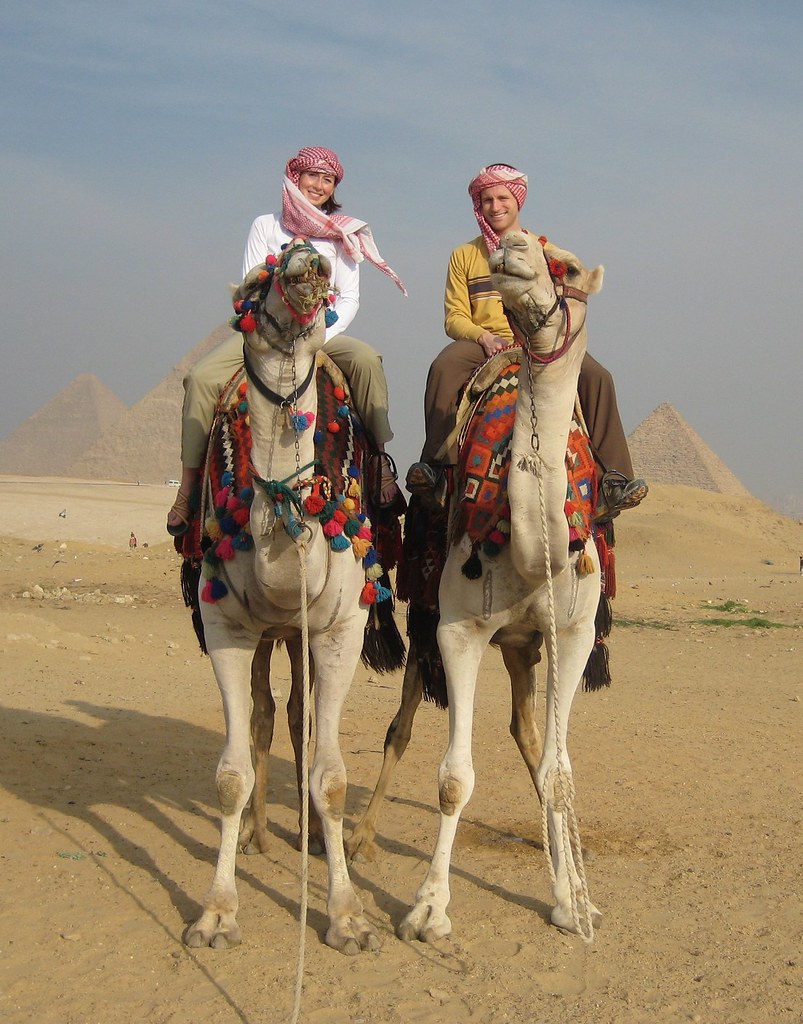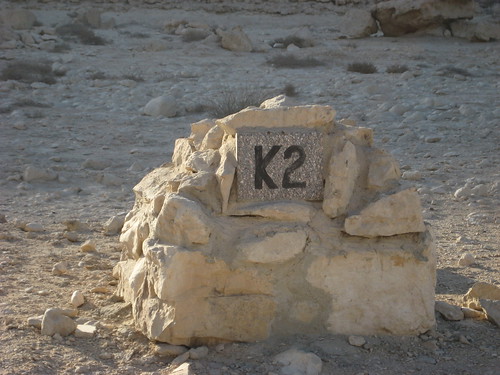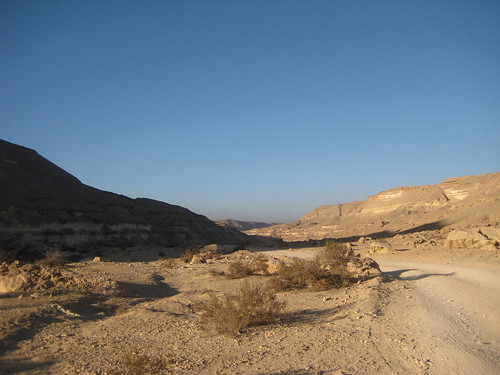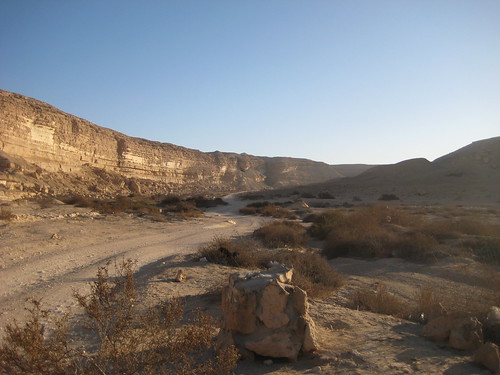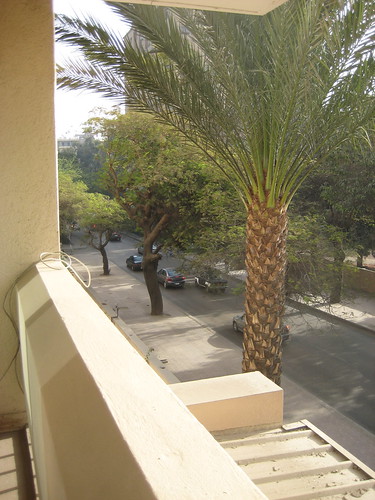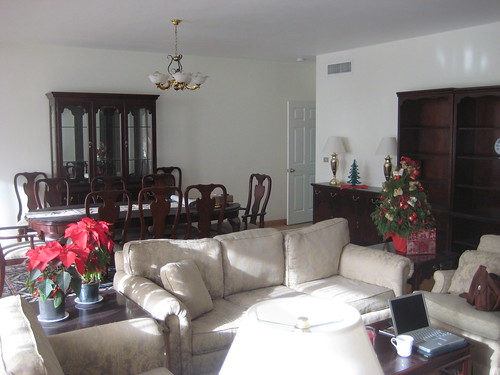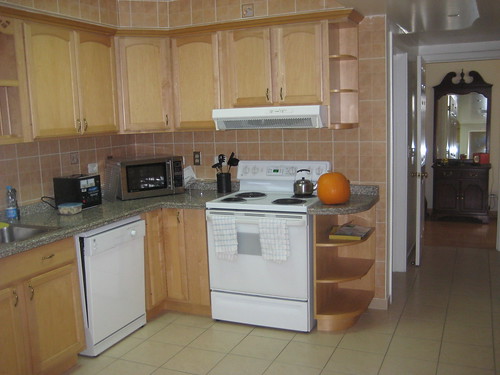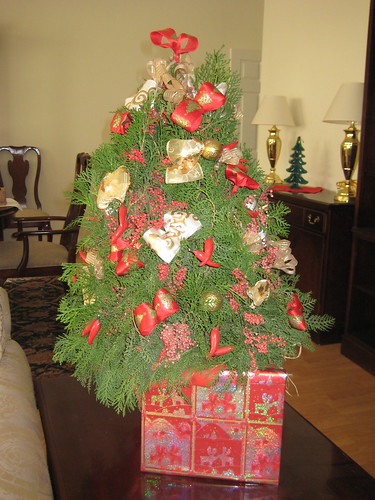
At 12:00 noon on Christmas Day 2009 Seth and I were picked up by a driver I had arranged to take us out to Giza for a tour of the pyramids. This was our first sight seeing adventure in Egypt and made for a memorable first Christmas in Cairo.
Friday was a good day to take this trip as the traffic was light and the drive was easy due to much of the population being in Mosque for Friday prayers. The trip to Giza took about 25 minutes from our apartment. As I looked out the window driving through the town of Giza the pyramids would peek out through the spaces in the buildings and the anticipation of what we were about to see was building.
We picked up our guide, Nabil, just outside the entrance. He led us up to the ticket window and took care of buying the tickets. As we passed through the gates he warned us that many people would try to approach us to sell things and we should just say, "No," and keep moving.
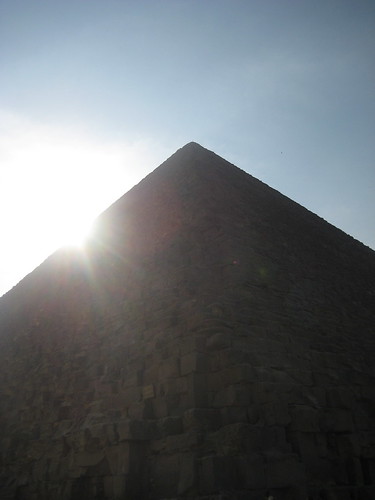
We made our first stop directly across from the Great Pyramid, the last remaining of the 7 Wonders of the Ancient World. Built as a tomb for King Cheops around 2570 BC it is the largest pyramid in Egypt originally standing 146m tall. It is comprised of 2.3 million limestone blocks each weighing about 2.5 tons. The blocks were carved in Aswan and carried down river on boats to Giza. Before the constructions of the Eiffel Tower as the entrance arch for the 1889 World's Fair, the Great Pyramid was the tallest building on the planet and had held that title for almost 4,500 years! Can you imagine what tourists in the 1800s must have thought standing at its base?
How did they do it? First of all, we learned that it is a misconception that the pyramids were built by a slave labor force. In fact, its construction is more accurately thought of as one of the first economic stimulus packages! During the annual flood season the Nile covered farmer's fields and they were unable to work. The available labor force was employed to work on building the King's tomb, which took 23 years to complete. These same flood waters made it easier to transport building stone to the site.
About that stone...remember those 2.5 ton blocks? Take a look at how perfectly each block fits together remembering that no mortar was used to cement them.
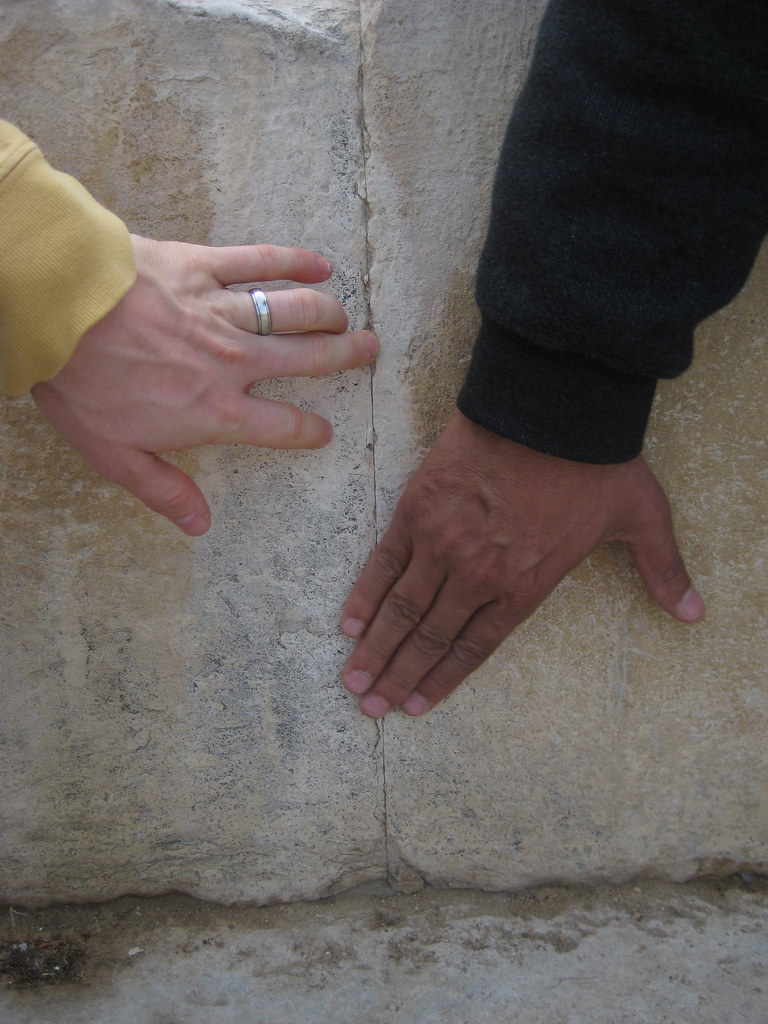
The blocks were carved by burrowing holes into the limestone and stuffing those holes with cedar logs. The logs were then soaked with water and as the wood expanded it would cause a crack to form in the limestone enabling blocks to be removed. Evidence of these holes can still be seen today in small depressions that are literally all over the ground around the pyramids.
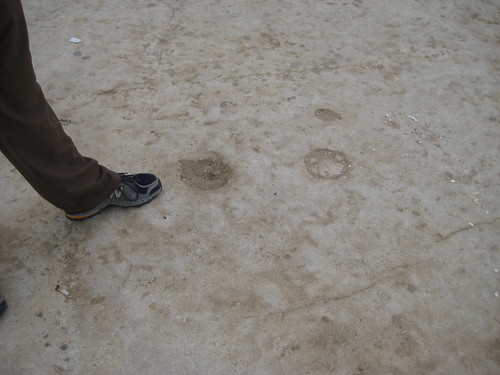
Once the blocks were removed they were transported to Giza and workers there began to smooth and grind the surface using sand and pieced of rock until a perfect edge was formed. Now, look back up at the photo of the crack and you can appreciate the precise work was done with these methods!
Below is a photo of Seth & I as we prepare to enter the Great Pyramid. You can see the large blocks that look like huge steps on the exterior. The surface of the pyramid was originally covered in limestone (this is back in 2570 BC) for a smooth, flat finish. It wasn't until the 1500s that the Ottoman Empire invaded and looted the limestone off the pyramid to use in constructing buildings. The fact that the limestone exterior survived until only 500 years ago and was only then removed by people speaks to the consistent, dry climate of the region. Perfect for preservation.
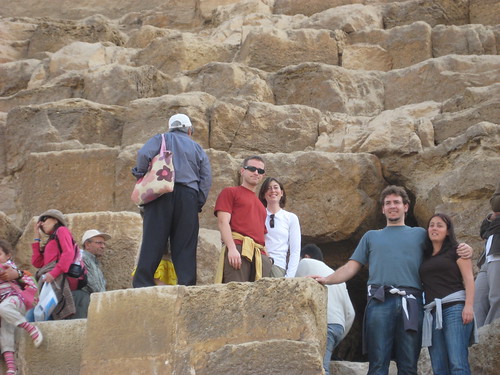
Unfortunately no cameras are allowed inside the pyramid so I will do my best to describe it to you. You enter through a modern entrance carved out in the side a few steps up off the ground and begin walking through a tunnel with lighting along the wall. It is similar to any cave you may have taken a tour through. After about 50 ft. you come to a fork in the tunnel leading to another passage off to the left that descends. This is blocked off. It leads to the first attempt at constructing the King's burial chamber. Originally planned to be underground below the pyramid until water from the Nile began to seep in during construction and the decision was made to seal it off and construct the chamber above ground in order to avoid rotting the mummy.
Now you begin to climb up a passage way with a low ceiling. You have to walk crouched over and hold on to the hand rail as you walk up the smooth ramp because it is a narrow two-way passage with people coming back down at you as you hug the side. After 40 meters of walking like this you come out into what is called the Great Gallery. This is a deceiving name. The size you imagine when you hear "Great Gallery" is all vertical. you are still in a narrow room with a slanted pathway leading up but you no longer have to walk crouched over. Far from it! The ceiling of this chamber is 8.5 meters (about 28 ft.) tall. At the end of this passage you crouch down one more time to duck under a slab of granite and enter the King's burial chamber.
Inside it is dark and hot. At first glance the chamber is a bit anticlimactic. As Seth commented upon entering, "All this work to build this pyramid all for a room smaller than our master bedroom." But then you sit down and lean against one of the 400 ton red granite slabs and think about where you are. How amazing that you are touching the same stone that builders and royal attendants touched during the funeral of King Cheops. Look to your right and there is the sarcophagus, a 4-sided granite box with no top that once held the King's coffin and mummy. You think about the 9 huge granite slabs suspended above you, holding the enormous weight of the rest of the pyramid away. I'll admit, I felt the mild panic of claustrophobia at first.
We learned that the ancient Egyptians used the pyramid shape for the tombs of their most important people because they believed that, by placing the bodies closer to the sky, their passage to the afterlife would be made easier. Egyptians also believed that we lived 3 lives, the first here on earth was relatively short, the second life could last thousands of years and was spent preparing for paradise, the third and final life was spent in heaven. Knowing this it makes sense that tombs would be made of granite and that people would be buried with preserved food and offerings to sustain them for the second life.
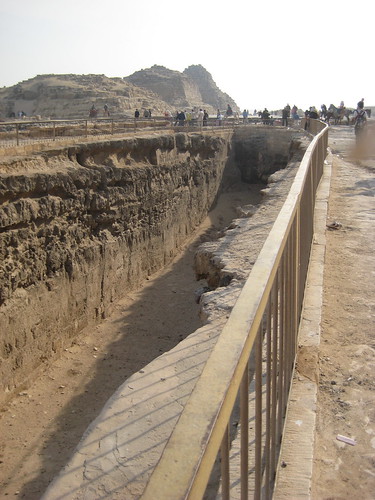
Speaking of passage to the afterlife, the above photo is of an excavation sight where a boat was uncovered in 1954. The boat, made out of cedar, is called "Solar Boat" as carvings along its surface indicate that it was to be used by the King as transportation toward the sun for the afterlife. Similar boats were subsequently found near his queen's tomb and the other pyramids as well.
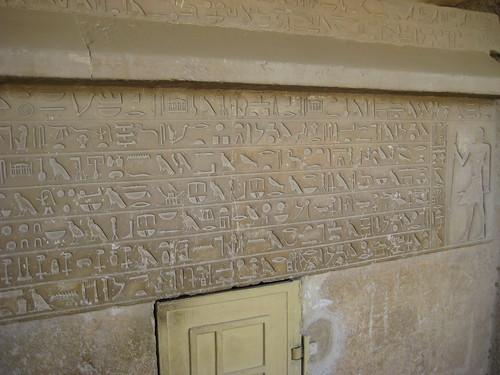
The tomb of the head architect of the pyramid is located a small distance to the west. His tomb is below ground and the below photo shows the hieroglyphic inscription above the door. Our guide explained that it reads like an ancient resume explaining his accomplishments in life. Inside we saw wall carvings that were colored in oranges, reds and blues. These colors were made by grinding stones like agate and turquoise and mixing the powdered rock with egg whites to make a paint that is still here over 4,000 years later!
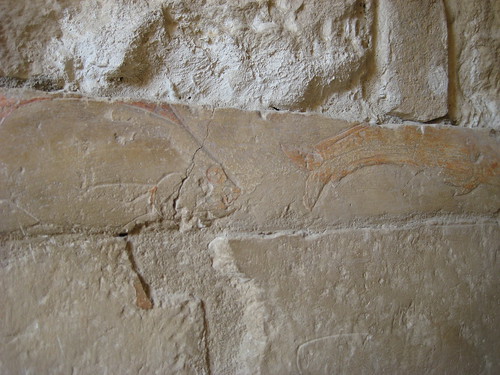
In the architect's tomb there is a statue of him shown in the photo below. Notice his hands on his thighs. Our guide explained that the position of his hands is important. His right hand is open with the palm facing down while his left hand is clenched in a fist. As the right hand is dominant for most people, this position indicates that the architect's dominant trait was fairness and kindness while his left hand shows that he can use force when necessary.
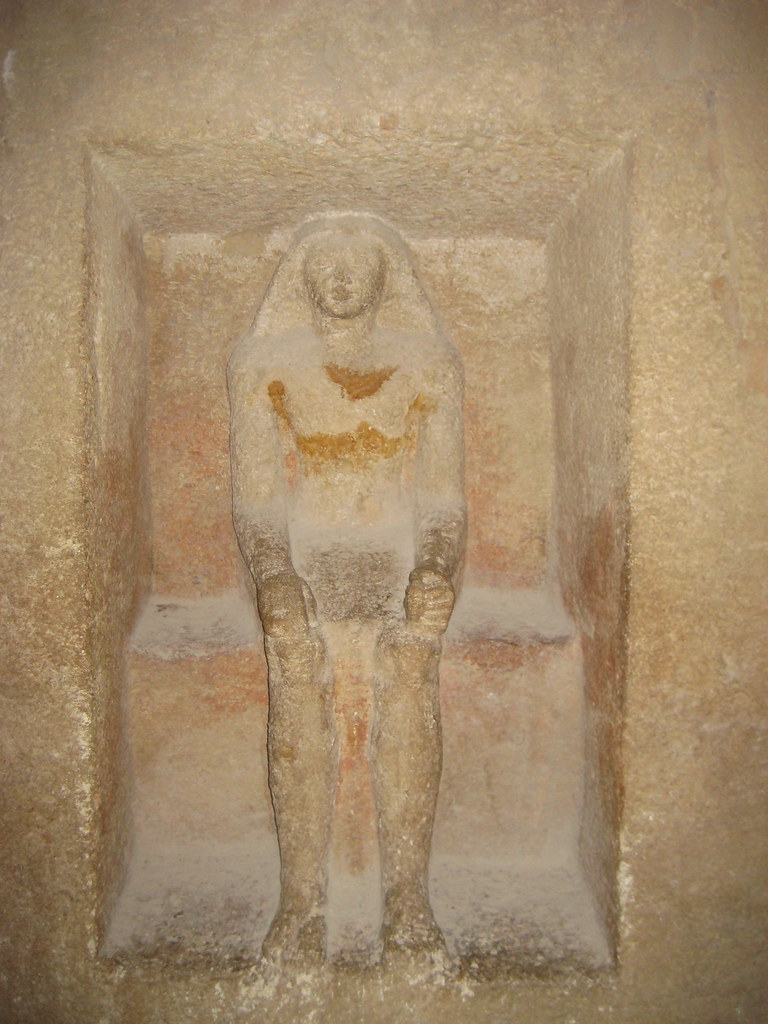
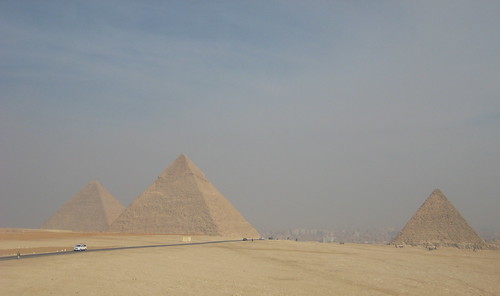
The three main pyramids at Giza can be thought of as father, son and grandson. The Great pyramid was the tomb for King Cheops, the second pyramid was the tomb for his son, King Chephren and the third was the tomb for his grandson Mycerinus. You can see that the limestone exterior that covered the blocks is still intact at the top of the second pyramid:
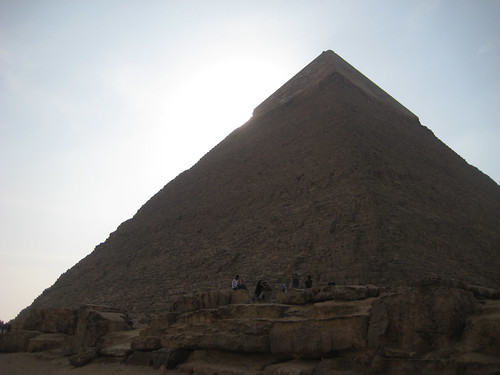
At first glance the second pyramid seems taller than the Great Pyramid. This optical illusion is no mistake. King Chephren wanted his pyramid to be bigger than his father's but couldn't very well get away with this as it would be a great disrespect. Instead he built a pyramid 10 meters shorter and place it on a hill! Clever little bugger.
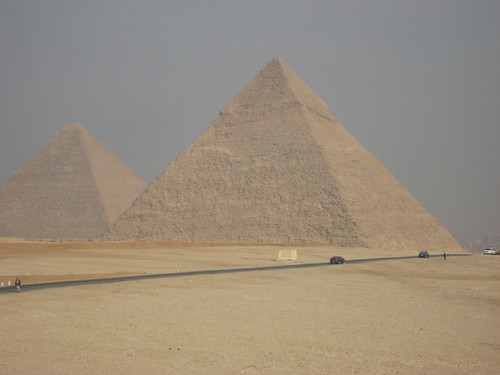
The Sphinx is located to the west of the second pyramid and faces directly east. The face of the Sphinx is thought to be a copy of the face of King Chephren. We learned that this is the largest of the over 100 sphinxes in Egypt (and you though this was the only one!) The Sphinx is a symbolic protector of Egypt and faces east because, historically, most of the invaders came from the east.
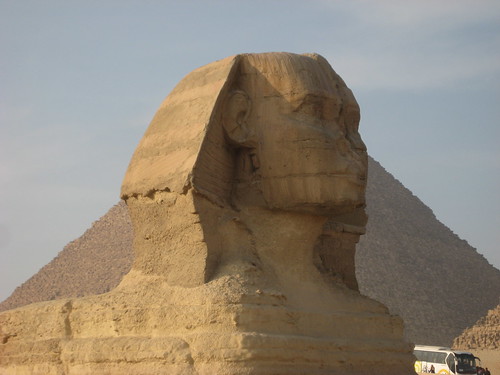

In the above photo you can make out the Sphinx's tail wrapping around his right rear leg.
We also got suckered into a 5 minute camel ride and took the obligatory tourist photo in front of the pyramids on a camel. We learned a novice lesson the hard way and next time we'll speak up and say, "No thanks." before we get steam rolled in to paying a large tip for this silly stuff. All the same...Merry Christmas from Egypt!
